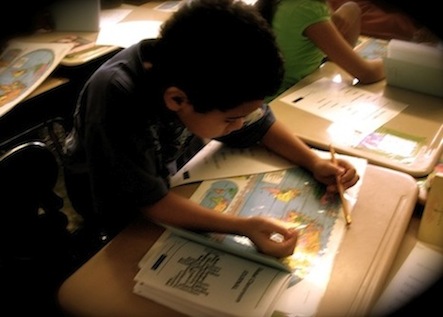
As part of the Global Careers and Education program, new Global Guide Pilar Pertusa held an excellent workshop at Newcomers High School in Queens. A Fulbright grantee from Spain, Pilar studies Museum Studies at New York University, and Global Classroom was thrilled to have her hold a workshop on her field of study.
After an introduction to Spain and an overview of her personal academic journey in Spain, Ireland and now the U.S., Pilar explained what the field of Museum Studies entails. She began by asking the students what purposes museums serve. Students responded that museums are able to portray aspects of other cultures to people and that they can also document historical time periods.
Pilar went on to talk about what type of career her program was training her for. She asked students to use their linguistic skills and try to give her a definition of what a curator does, based on the root of the word. Students pointed out that it is related to the word “to cure” and meant "to take care of". Pilar explained that not only do curators care for artwork, but they are also responsible for connecting artists and artwork to the general public.
In order to go into more depth regarding the role that curators play, Pilar started a discussion on the possible sources of artists’ inspiration. Students’ ideas included the people around them and major events such as revolutions. Pilar talked about how artists are inspired by the world around them, including the influences of politics and history. For curators, this means that they must be well-versed in several disciplines in order to successfully interpret artwork for the public. A curator must be familiar with concepts such as the historical time period of the artwork, anthropological influences, and the political climate because these all shape an artist's work.
Pilar gave the students a great activity which allowed them to use what they had learned about curators’ work. She split the class into four groups, gave them each several paintings and asked them to curate an exhibit complete with a title and objective. Depending on how successful they were, Pilar would decide whether they would receive funding for their hypothetical exhibits.
Two groups presented their exhibit ideas to the class. The first group’s exhibit was entitled “Revolution and Consequences” and was directed at a teenage audience. This exhibit sought to help people think critically about history by portraying revolutions from other perspectives. The second group’s exhibit, “Punishment and Abuse”, was intended for journalists, artists and historians, and it showed how forms of punishment have evolved over time. Thanks to their excellent work, both groups received funding for their exhibits!



